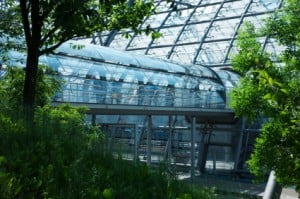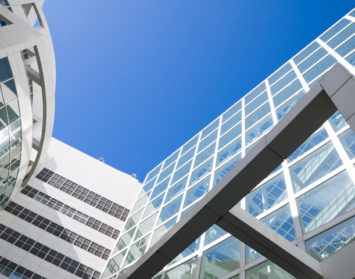 As the commercial real estate market moves through its cyclical ups and downs, there are many windows of opportunity that periodically open up for savvy tenants to pounce on when the timing is right. Of course, it’s also important to always keep in mind the old adage of “look before you leap” – especially with longer term lease commitments that you’ll have to live with for a number of years.
As the commercial real estate market moves through its cyclical ups and downs, there are many windows of opportunity that periodically open up for savvy tenants to pounce on when the timing is right. Of course, it’s also important to always keep in mind the old adage of “look before you leap” – especially with longer term lease commitments that you’ll have to live with for a number of years.
For those companies that can adapt their requirements for older Class B space, this year could offer some very attractive opportunities. When commercial real estate markets are hot, developers respond by creating lots of new Class A space. Then, when the market suddenly turns down and stays that way for a while, rates for Class A space eventually fall as property owners adjust to the reality that their rate projections are no longer sustainable. The result is a “flight to quality” as many tenants leverage the situation to upgrade into the Class A space when their old leases expire. We’ve been experiencing this phenomenon for a while and the Class A market is actually firming up quite a bit.
One thing that a lot of people overlook is the ripple effect of these companies moving up, which predictably is creating a glut of vacant space in the Class B market.
With the landlords of Class B properties often having a much lower cost structure but still needing to keep their buildings leased up, prospective tenants can now find some very attractive opportunities with Class B space. If you find a Class B property that matches your company requirements, you’ll frequently also find a very motivated landlord and an excellent cost savings opportunity.
However, you need to be extra careful when evaluating Class B space in order to make sure that today’s “low-cost deal” doesn’t turn out to be an ongoing problem that you will regret for years to come.
The following are just a few of the key issues that deserve special attention whenever you’re considering signing a lease for Class B space.
Deferred Maintenance
Since Class B properties are inherently older buildings, it is critical to be sure that the space you’re considering is in good shape and has been properly maintained. In multiple-building business parks, also pay close attention to the condition of shared infrastructure and support systems, such as HVAC, water, power, etc. Depending on lease terms, you could end up getting stuck with footing the bill for repairs or could find yourself living with unexpected disruptions of key support services. Deferred maintenance can also have a significant impact on your operating costs. For example, older properties can often be harder to heat and cool so the condition and proper functioning of HVAC systems are an important ongoing cost factor.
Landlord Viability
With many older Class B properties that have been owned by the same person or family for decades, you really can find a good deal because the landlord’s cost structure is very low and they’ve got a lot of flexibility. However, it’s worth doing a little bit of research to see if the property has changed hands or been refinanced recently. What may look like a great deal and low rate can turn sour very quickly if the landlord is under water and unable to meet their obligations, especially in Class B space where an over-extended landlord might lack the motivation to make needed investments.
Code Compliance
With older properties, it’s also important to watch out for any code violations or safety issues that may need to be brought into compliance. Before signing a lease, it’s worth proposing a blanket clause that the landlord will be solely responsible for any costs associated with bringing the property into compliance with code requirements.
Communications & Power
Some key infrastructure issues that deserve special attention are communications and power. Many Class B buildings have not been retrofitted to support external high-speed Internet connections and/or internal structured-wiring for local area networking. In addition, the original power provisioning and distribution systems in older buildings typically fall well short of today’s requirements. Even if the power and communications infrastructure appears to have been updated,, keep an eye out for patch-work upgrades and jury-rigged systems that could create headaches for your operations. If you have any concerns in this area, push for the landlord to commit to paying for any needed changes before you sign a lease.
Surrounding Environment
Class B space is likely to be found in mature neighborhoods where the surrounding environment often consists of mixed use or older buildings, as well as older roads, sidewalks, etc. This isn’t necessarily a bad thing but you need to consider whether any of these issues can have a negative impact on your business operations. If customer accessibility is important in your business model, don’t sacrifice it to get a deal. Also, since the biggest investment for most companies is their workforce, you have to make sure that the surrounding environment won’t negatively impact your recruiting and retention of employees.
The Bottom Line
Don’t let the above list of cautionary issues scare you away from considering Class B space. The bottom line is, by finding an older well-established building that truly meets all of your company’s requirements, you can save a lot of money over the life of the lease term. The key is to make sure that the property is on solid ground financially, physically and operationally, before you make the commitment. By knowing which pitfalls to watch out for, you can avoid the risks and reap the rewards of Class B leasing opportunities.
Scot Ginsburg is an executive vice president of Hughes Marino, a global corporate real estate advisory firm that exclusively represents tenants and buyers. Contact Scot at 1-844-662-6635 or scot.ginsburg@hughesmarino.com to learn more.








